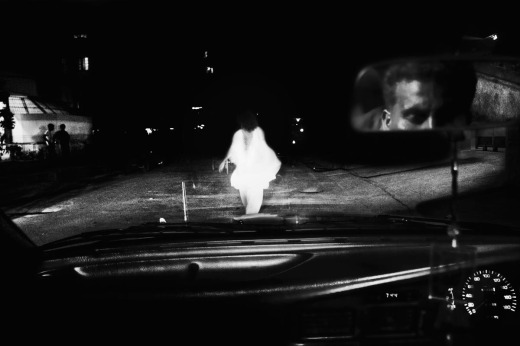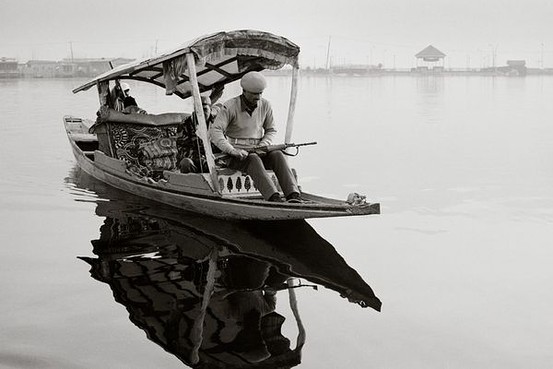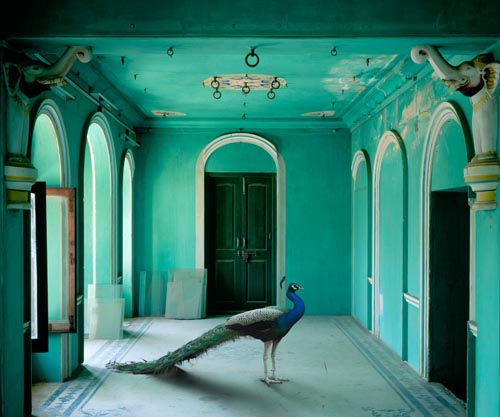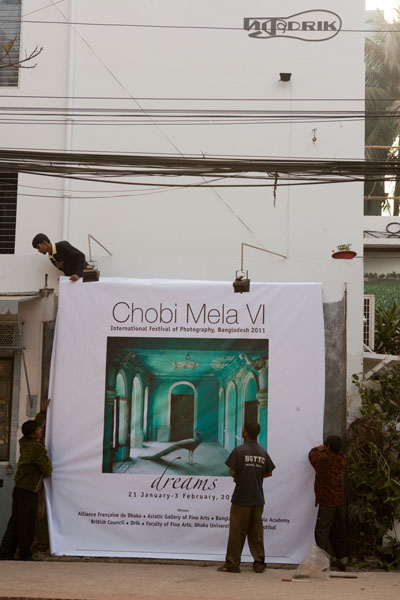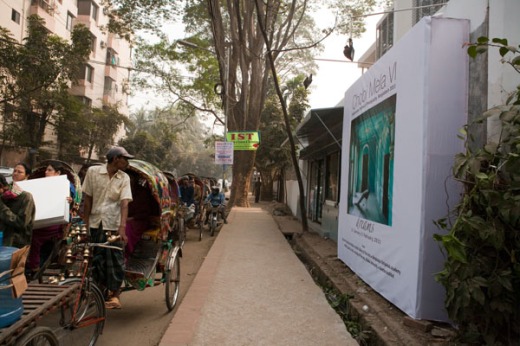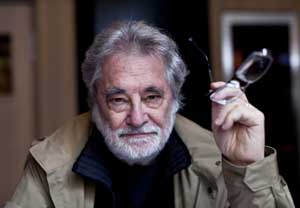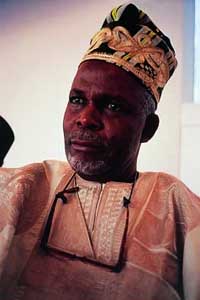Subscribe to ShahidulNews
To Debasish Shom, photography is the interpretation of a state of mind. He believes the physiological and emotional thoughts of the mind influence images greatly, and photographs act as a medium to unravel and express these thoughts.
A Bangladeshi photographer, Debasish Shom is a graduate from Pathshala South Asian Media Academy. Since childhood, Shom has always felt the need for a medium to aptly convey his emotions. When he graduated from university, he began taking interest in pictures and got admitted to Pathshala. Unlike many who have grown up with photographs, Shom?s first exposure of the art came through the institution.
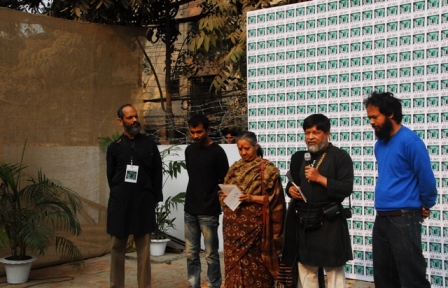 Debashish Shom second from left at the special opening of four exhibitions at Drik 0n 23 January 2001. With him are (from Left to right) artist David de Souza, Chief Guest Kushi Kabir, Festival Director Shahidul Alam and artist Munem Wasif. Photograph Chulie de Silva
Debashish Shom second from left at the special opening of four exhibitions at Drik 0n 23 January 2001. With him are (from Left to right) artist David de Souza, Chief Guest Kushi Kabir, Festival Director Shahidul Alam and artist Munem Wasif. Photograph Chulie de Silva
Soon, photographs and stories were beginning to take shape. His exhibition ?at Chobi Mela VI, ?Dhaka: My Dreams, My Reality? at the Drik Open Air Gallery is on till 3 February 2011.? It?embodies the psychosomatic war between his dreams and reality. He portrays how a person under the influence of drugs perceives his space in the bustling city of the rat race. There is a sense of isolation, illusion, depression and emptiness everywhere that largely contradicts what one knows Dhaka city to be.
?When I photograph, I always try to redefine my space. What is seen and experienced is reconstructed and a contradiction created. That is how I feel I am most involved with space and matter.?
The exhibit encapsulates complex struggles into simple photographs that strike the viewers almost instantaneously. They are powerful and potent, providing an?indiscreet?insight into undiscovered realities. To interpret the mind?s transition and turmoil is exciting and difficult at the same time, and Shom has rather effortlessly captured it in his frames.
Shom has held exhibitions at Drik Gallery Bangladesh and Kiyosato Museum of Arts in Japan. His work was also showcased in Chobi Mela IV. As a successful artist, would Shom recommend a career in photography to others?
?If someone is passionate, I believe a career can be built through photography. There is a lot of opportunity in commercial photography that can be approached alongside documentary photography. I only speak from my experiences, and I still believe I can make it as a photographer. However, it is important rethink carefully before making up one?s mind in this field. There is a lot of hard work involved.?
With the rampant growth of digital technology, the field of photography has become increasingly competitive over the past few years. There are more people taking pictures now.
?I think it?s great so many people are taking pictures. It makes them value pictures. Photographs then become significant in their lives and they can appreciate the art better.?
Debasish Shom currently works for CANVAS ? a fashion and lifestyle magazine.
——–
About Sabhanaz Rashid Diya
I’m a cranky, over-excited and lazy 18-year-old. I can suddenly “spark out” creativity and sleep non-stop for 12 hours. I also am frustrated (and in good moods, amused) by my own life. You can know more about me at 18forlife.wordpress.com
View all posts by Sabhanaz Rashid Diya??

